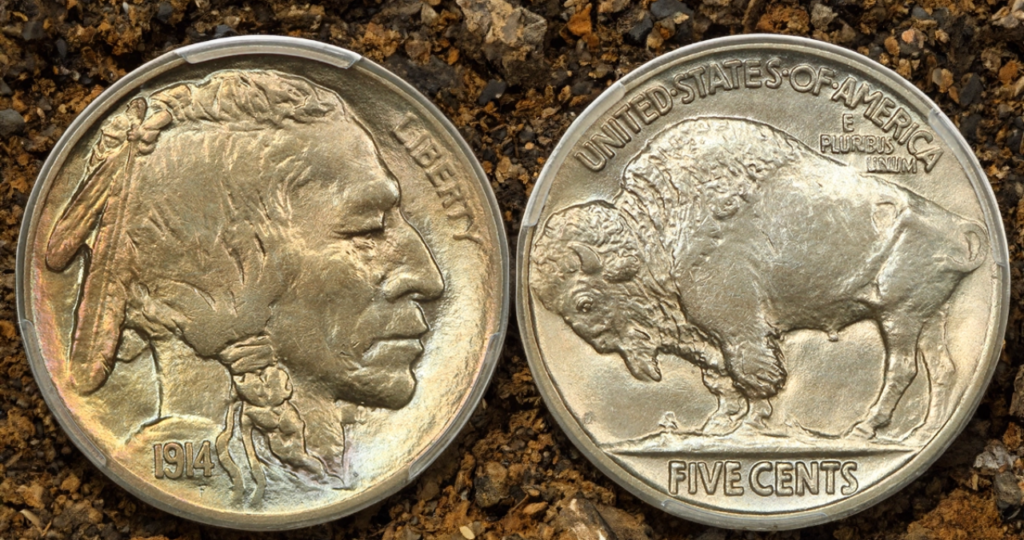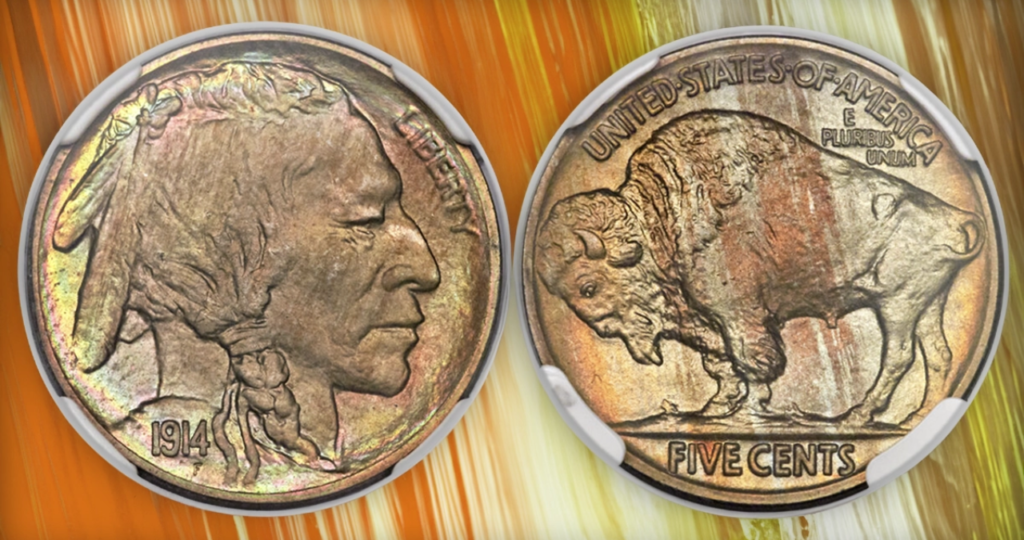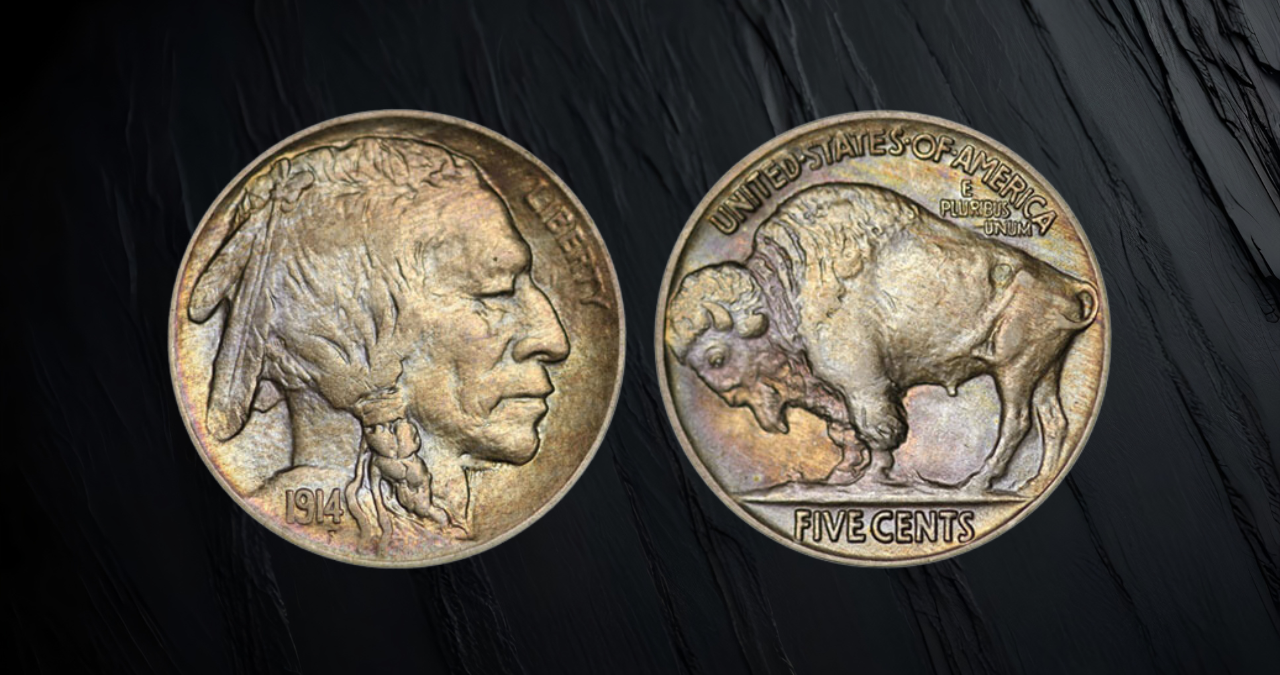The 1914 Buffalo Nickel is a coin that many collectors highly treasure, not just for its design but for its place in history. This was the second year of the iconic Buffalo Nickel, designed by James Earle Fraser. After making major adjustments to the design in 1913, only a slight modification to the date was done for the 1914 issue.
Interestingly, despite Philadelphia minting more nickels than Denver and San Francisco in that year, the 1914 Buffalo Nickel from the Philadelphia Mint is only slightly harder to find than the 1914-S. The real challenge for collectors comes with the 1914-D, which is even scarcer in higher grades. But the rare 1914/3 overdate variety really steals the spotlight.
Production and Population
Philadelphia struck over four million 1914 Buffalo Nickels, making it the only mint that crossed this figure for that year. However, despite such a high mintage number, this coin is still slightly rarer than the 1914-S version, which had a lower mintage.
Over the years, around 4,000 examples have been graded in Mint State by top coin grading agencies like NGC and PCGS, with most graded at MS64. These coins are usually well-struck, and it is common to find them with detailed features like the horns and fur on the buffalo being distinct.
Coins from this year often show interesting toning patterns. A large portion of these coins exhibit a golden or yellow tone, which is typical for older nickel coins. Additionally, you might come across examples with ice-blue toning. Some higher-grade coins even show a detailed image of the motto “E PLURIBUS UNUM” due to die clashes.
High-Grade Rarities

The highest grade for the 1914 Buffalo Nickel is currently MS67+, with a few examples certified by both PCGS and NGC. Coins in this top population first appeared in the PCGS reports in 2019, and the number of MS67 coins has gradually increased over the years.
Despite this, the price of these coins has fallen over the last two decades due to their increasing availability. For example, a 1914 Buffalo Nickel that fetched $15,000 in 2019 had special toning and a CAC sticker, but since then, prices have normalized.
Some noteworthy sales include a PCGS MS67+ CAC Buffalo Nickel that sold for over $27,000 in 2023, showcasing the appeal of these high-grade examples.
1914/3 Overdate Variety
One of the most exciting discoveries in the Buffalo Nickel series is the 1914/3 overdate. This error occurred when a working hub from 1913 was reused for the 1914 dies. The result was a visible “3” under the “4” in the date. This rare variety was discovered in 1996 and has since become a highly sought-after coin among collectors.
High-grade examples of this coin are incredibly rare, with a PCGS MS66 CAC example selling for a whopping $84,375 in 2021. Most other mint state examples of this overdate variety tend to sell in lower grades like MS64.
Design Details

The Buffalo Nickel’s design is one of the most recognizable in U.S. coinage history. On the obverse, Fraser depicted a Native American chief based on a composite of three different men: Chief Iron Tail of the Sioux, Big Tree of the Kiowa, and Two Moons of the Cheyenne. The detailed bust shows the chief wearing feathers in his hair, with the date “1914” placed just below the bust. The word “LIBERTY” appears along the rim near the top.
The reverse of the coin features a large buffalo, which was modeled after an actual buffalo named Black Diamond that lived in the Central Park Zoo in New York. The buffalo stands on a patch of ground with the denomination “FIVE CENTS” beneath it. Above the buffalo is the inscription “UNITED STATES OF AMERICA,” with the motto “E PLURIBUS UNUM” placed just between the buffalo’s back and the legend.
Unlike many coins from this period, the Buffalo Nickel does not include the national motto “IN GOD WE TRUST,” as it wasn’t required by law to appear on this denomination.
Why Collect the 1914 Buffalo Nickel?
For collectors, the 1914 Buffalo Nickel presents an intriguing challenge. Whether you’re seeking high-grade examples with beautiful toning or hunting down the elusive 1914/3 overdate, this coin offers something for everyone. Even with declining prices for the top population grades, these coins remain a vital part of any serious collection.

